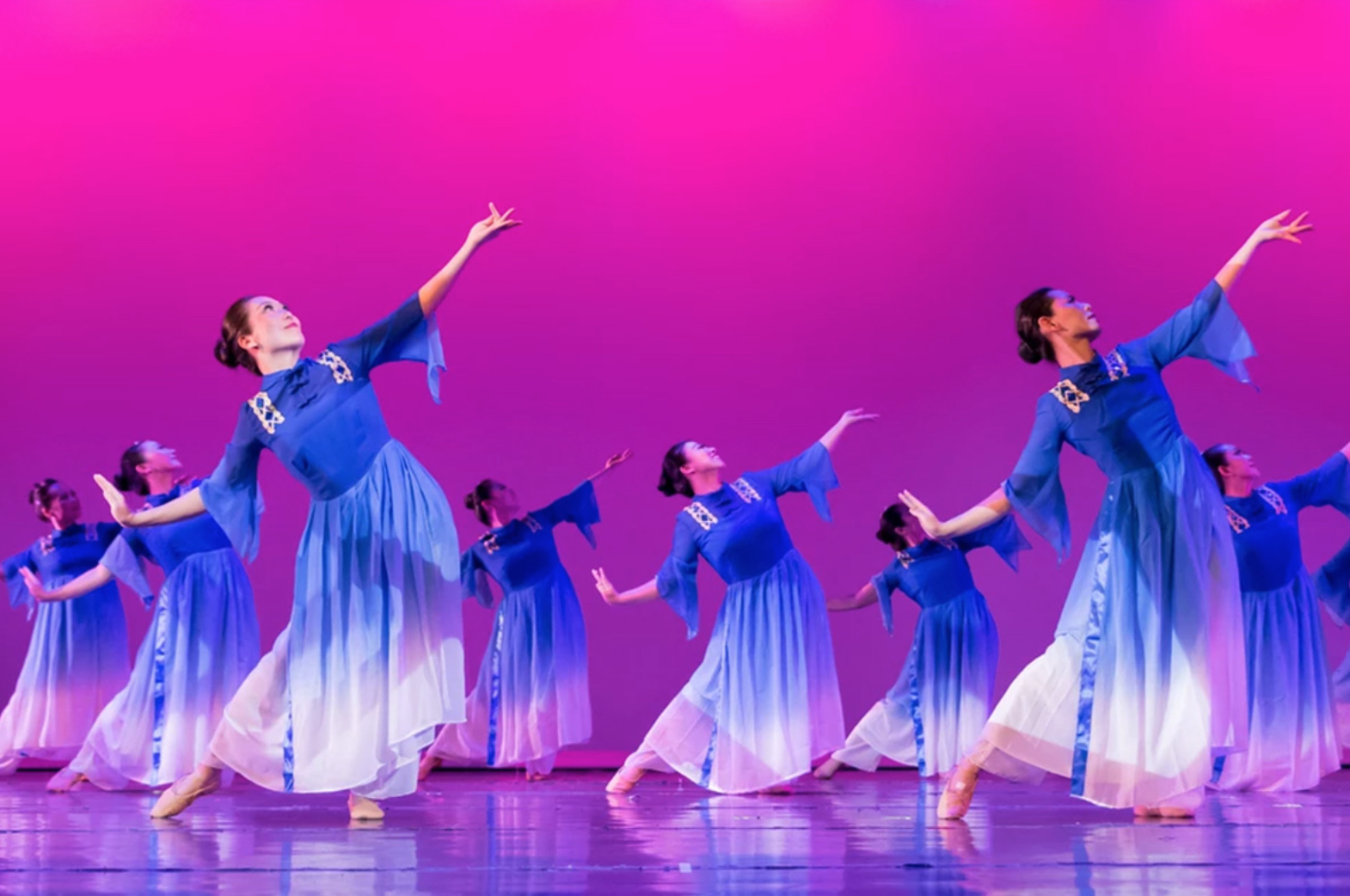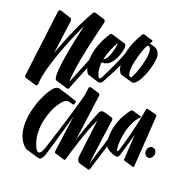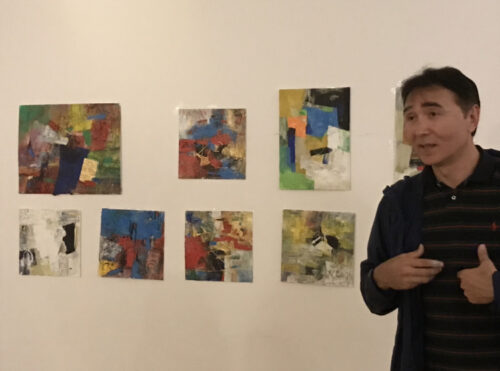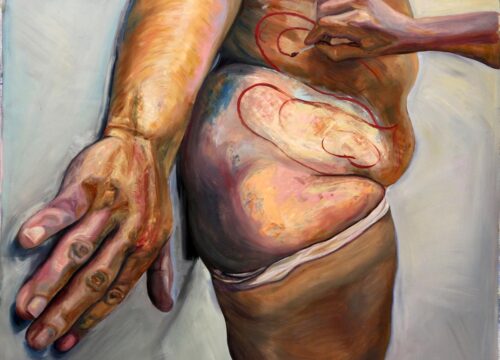This article was originally published on Neocha and is republished with permission.
As classical Chinese court music fills the concert hall, the dancers on stage remain motionless, almost like specimens preserved in amber. Despite the stillness, their lithe figures exude an aura of grace. Within the melody, stringed instrumentations begin to blend into the composition, and an invisible force seems to set the 15 dancers in motion. They move with force and purpose, swinging their limbs. As they tiptoe along with the rhythm, their silk dresses seem free from the restraints of gravity. These dancers are fully in the moment, and nothing else seems to matter aside from the music and performance.
This impressive performance was choreographed by Artisan Dance Academy (ADA). As the first Chinese dance school in Boston, the organization teaches Chinese dance with a focus on cultural context and traditional sensibilities. The mission of the dance group is not about making students the next Martha Graham or Michael Jackson, but reviving one of the oldest Eastern art forms, Chinese dance, in America.
Established in 2016 in Needham, MA, ADA is dedicated to sharing the art of Chinese dance with students ranging from three to sixty years old. Through their explorations of classical Chinese dance, ethnic and folk dance, they look to bring new insight into Chinese heritage in a contemporary context.
The lead choreographer, Wang Meng, says that it hasn’t been an easy endeavor since classical Chinese dance is an art form that is little understood in the West.
“At first, we only had two students; they were practicing Chinese dance in their basement at the time,” she recalls. “And now we have around 400 students.”
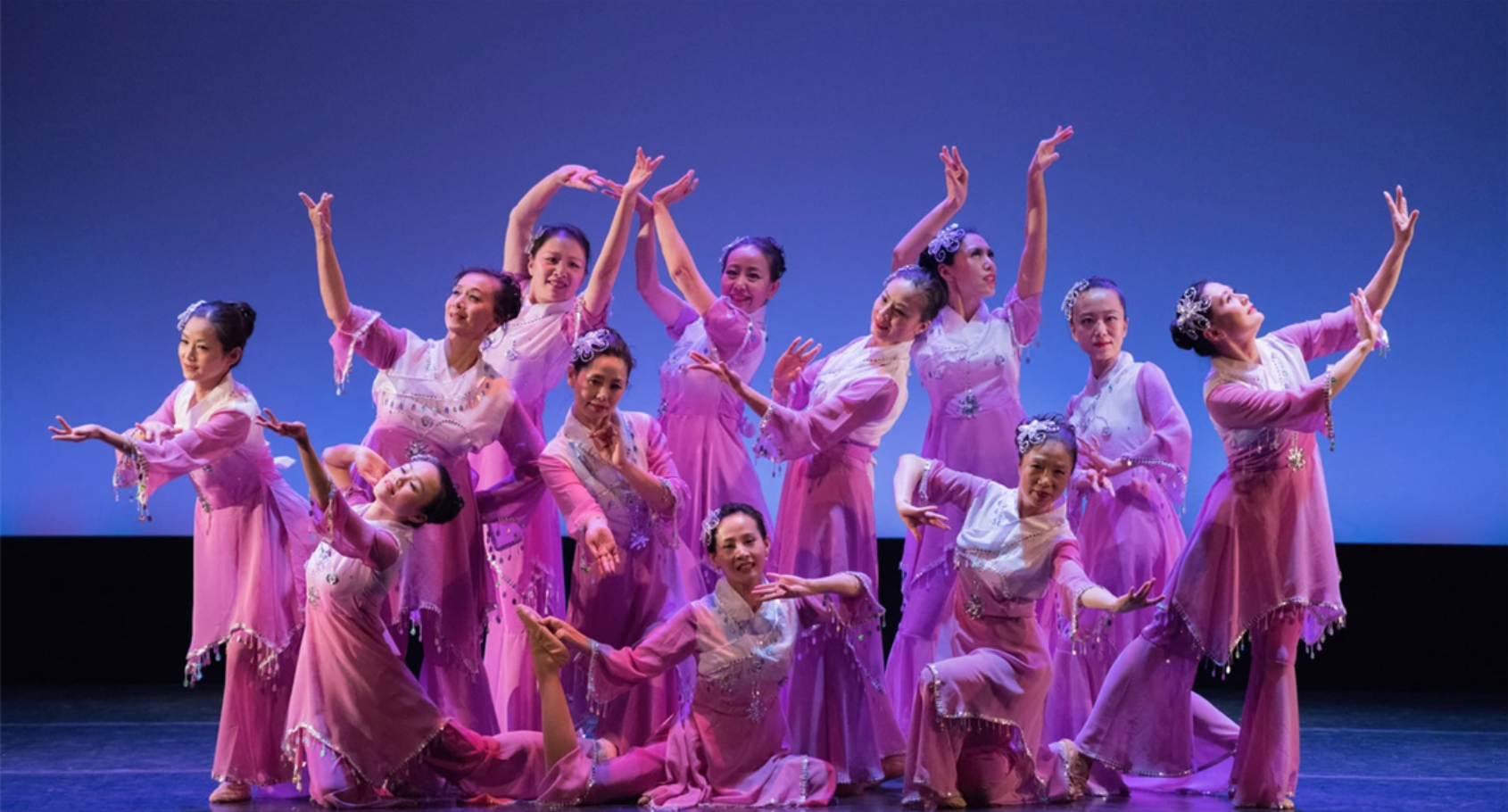
Wang believes that if Western audiences wish to better understand Chinese dance, they need to learn the country’s history.
“Unlike modern dance that arose out of America in the early 20th century, Chinese dance cannot survive without its rich cultural and historical backgrounds,” she says. “You can choreograph modern dance based on last night’s dream, but you cannot do it with Chinese dance. Chinese dance asks dancers to visualize the cultural lineage with your body.”
ADA not only leads students to appreciate the different types of dance in China but also provides them with important cultural knowledge.
In a class for younger kids, Wang asks everyone to perform a complicated kicking dance sequence. Some students hide behind their peers to avoid practicing the move. After seeing the hesitation, Wang turns off the music. Instead, she shares a history lesson. “Do you know where this kick comes from? It is a move borrowed from Hunan flower-drum opera.”
The anecdote seems to have worked. Some students try the move again; some crowd around Wang, tugging on her arm for more stories; and others laugh at their peers’ stiff moves.
Contemporary takes on Chinese dance is not solely about portrayals of the past or adaptations of classical literature; as Chinese dance has evolved, there’s now a certain universality to it.
“The themes of Chinese dance vary widely these days. Many Chinese dance performances visualize nature and express emotion,” says Wang.
China news, weekly.
Sign up for The China Project’s weekly newsletter, our free roundup of the most important China stories.
The recently trending Chinese dance drama Soaring Wings (translated as “Crested Ibises” in Chinese), which was shown during the 2021 China Central Television Spring Festival Gala, had already been a big hit in America since its Boston debut in 2018.
With a perfect combination of classical ballet and traditional Chinese folk dance, the dance visualized the environmental concerns for endangered animals. In a 2018 interview with the Beijing Review, lead dancer Jiejing Zhu said that she believes that Chinese dance is an art form that can bridge the cultural divide between China and America. Through dance, language barriers aren’t an issue.
“Soaring Wings shows the interdependence between human beings and nature,” Zhu says. “People of different backgrounds and nationalities also need to peacefully coexist in this world. New York City is a city of cultural diversity. I hope the crested ibis, a bird symbolizing good fortune, can bring New Yorkers peace and friendship as well.”
Despite the success of Soaring Wings, the traditional Eastern art form has met some resistance in the West. Some experts argued that Chinese dance is serving the function of a “propaganda tool” in America.
In the book Revolutionary Bodies, published in 2019, author Emily Wilcox wrote that “Chinese dance is a red legacy that has made a successful transition into the post-Mao period.” The author further claimed that Chinese dance acts as “national movements in a revolutionary age.”
However, in Wang’s view, she believes that people who truly enjoy Chinese dance may not make judgments like this. “People who practice Chinese dance are oftentimes crazy about this art form and will do everything to let more people realize the beauty of it. We would go to suburban areas in China’s 56 ethnic minorities to simply study their cultural customs and present it on stage.”
Practicing Chinese dance for nearly two decades now, Wang never thought that the decision of giving up her dancing career in Beijing would lead to bigger opportunities in Boston.
“I knew I had to jump out of the box and to see the outside world when I graduated from Beijing Dance Academy in 2016,” she says. “However, after working in the art administration industry for a year in Boston, I found that I cannot live without Chinese dance. It’s like a root grew inside of my body, so I decided to go back and become a dance teacher.”
Transitioning from a brilliant solo dancer in the 2008 Beijing Olympics game to a dream-weaving dance teacher who now works behind the scene, Wang finally found the career she’s been searching for — helping more people realize their dreams through Chinese dance.
While ballet takes dancers’ physical criteria very seriously, such as height and weight, Chinese dance is focused more on cultivating dancers’ personalities. Hence, the benefits of Chinese dance on an individual level can be very distinctive.
Jennifer Bai, 50, a first-generation American immigrant, believes that she has found her long-lost identity here.
“Physically detached from China, I feel alienated sometimes,” says Bai. “Chinese dance helps me to establish a bond with my cultural heritage. In the long term, my connection with Chinese culture will also pass on to my family.”
Sarah Jiang, a mom of two and a third-year dancing student, simply enjoys the excitement of dancing. “Chinese dance is so challenging and it makes me feel so accomplished,” says Jiang. Commenting on her newfound physical ability, Jiang says that, “At first, I didn’t even use my waist and back muscles, but I can even do the split now!”
Bai teases Jiang with a smile and says, “You are the only one who can do the split! Don’t make all of us do that!” With a coy smile, Jiang adds that practicing Chinese dance has made her younger.
Laughing at the conversation, Wang believes her hard work paid off.
“Many American-born-Chinese and foreign students have different levels of understanding towards Chinese culture,” Wang says. “They cannot accept music or movements that are too traditional as they will say this is ‘tacky.’ I have to modify the gestures, music, or even add some modern props to engage them.”
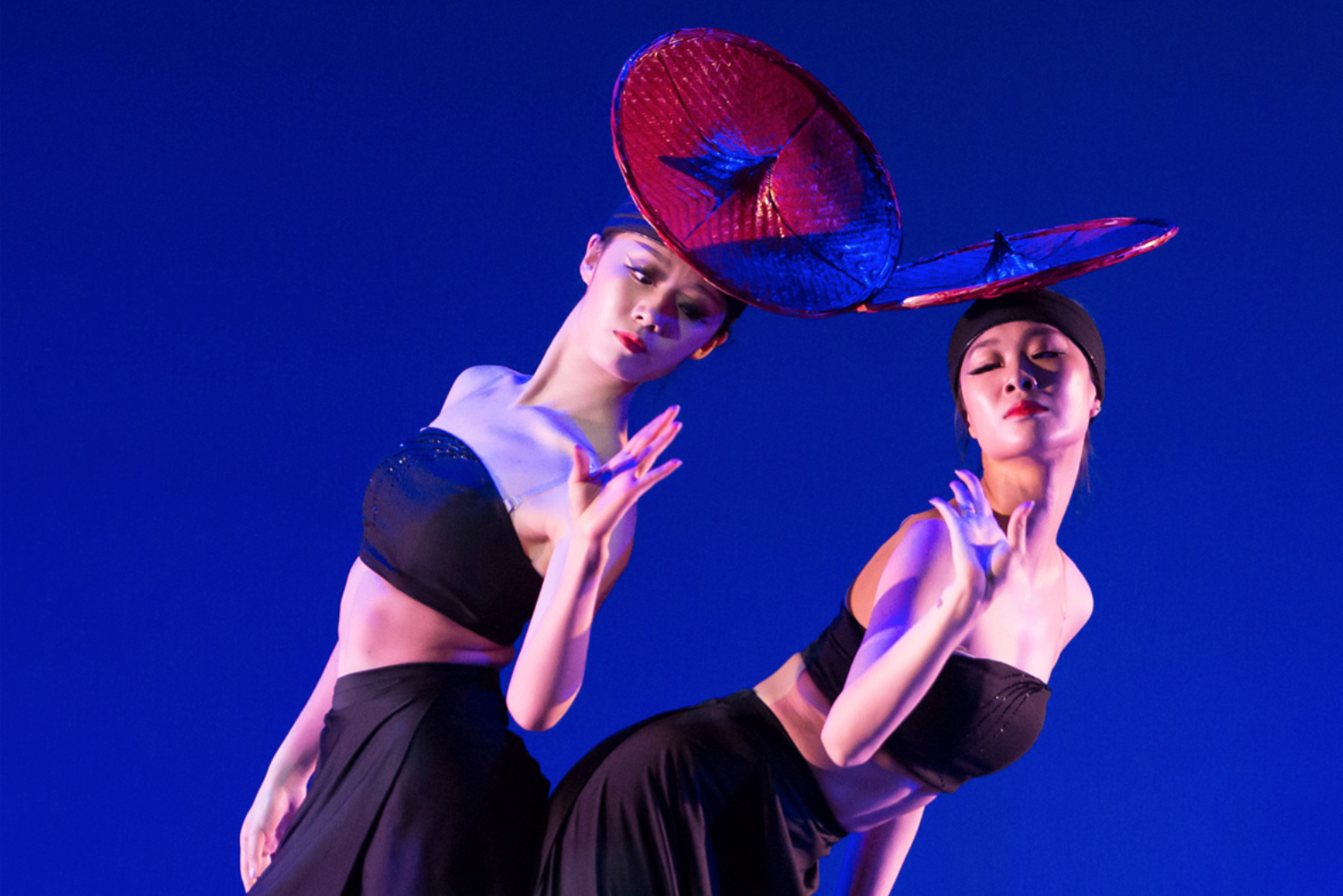
Even though some younger students who first attend may frown at the “strange” dance moves and scoff at the traditional music, Wang always stands her ground.
“When students complained saying, ‘This is so weird,’ I usually told them ‘This is your culture, and it is the way it should be,’” Wang says. She hopes that through dance, more people of the Chinese diaspora will be able to gain a better understanding of their own culture.
“Chinese dance is interesting to learn as there are so many different genres,” Wang says. “It is all about the individual’s expressiveness. You feel the dance with your heart, instead of your muscle.”
After a five-minute break, Wang asks everyone to put their legs up to do a stretching exercise. Hearing the instructions, the students groan. Some of them can barely lift their limbs after the hour of training.
Looking at the other reluctant students, Wang doesn’t appear disappointed. Instead, she turns on the stereo.
Within 30 seconds, almost all of the young dancers have bounced up from the floor. Though they were less than enthused to do the stretch, their fatigue seems to be an afterthought when there’s an opportunity to show off their moves. Moving with the melody, their long sleeves of blue silk fly through the air. The music seems to have given them a second wind.
Wang stands there, beaming. For two years, she has witnessed what learning Chinese dance can do for a bashful kid, for an old lady who underestimates her abilities, or for a first-generation immigrant who cannot find her own identity.
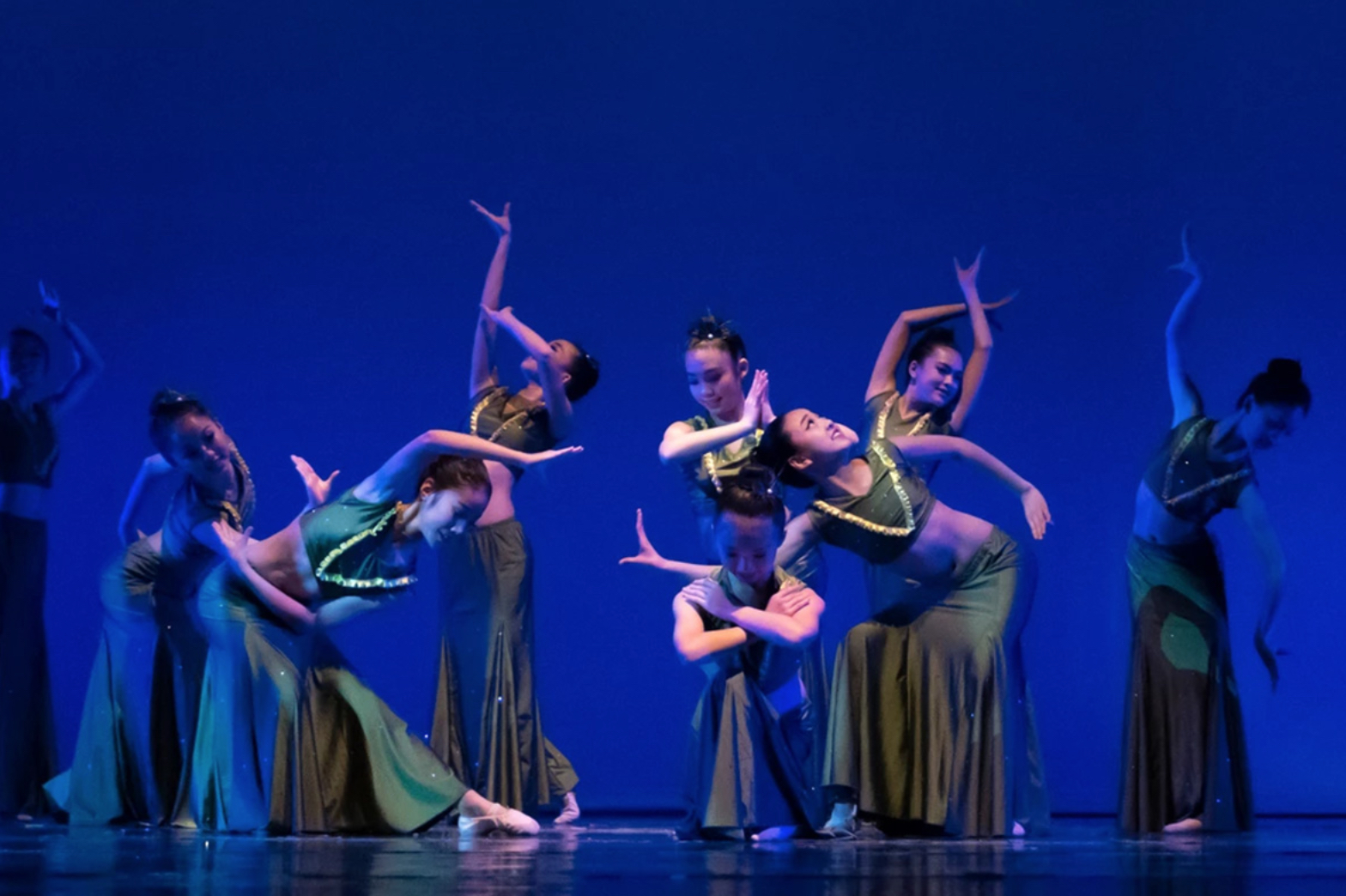
Ultimately, the difference between Chinese dance and Western dance is not explicit in Wang’s point of view. “I don’t believe there is a huge gap between the Western and Chinese dance,” says Wang. “Art is uniform in the entire universe. The difference lies only in the cultures.”
Moving forward, ADA wants to expand its students’ demographics and have a larger presence globally.
“There are more internationally known dance contests that invite Chinese dancers to participate lately,” Wang says. “Every year, our students and dance group were invited to Ivy League universities’ art festivals and popular contests like Star Dance Alliance, Kids Artistic Revue, and Elite Dance Challenge.”
Wang believes that Chinese dance’s virtuosic techniques and history are very rare in the industry. It’s an art that asks dancers to not only perform but to reflect on the past and present.
“Chinese dance is backed up by its enriched history and colorful culture, so it will never be washed away,” says Wang as she firmly puts on her patched dancing shoe, yellowed with age.
